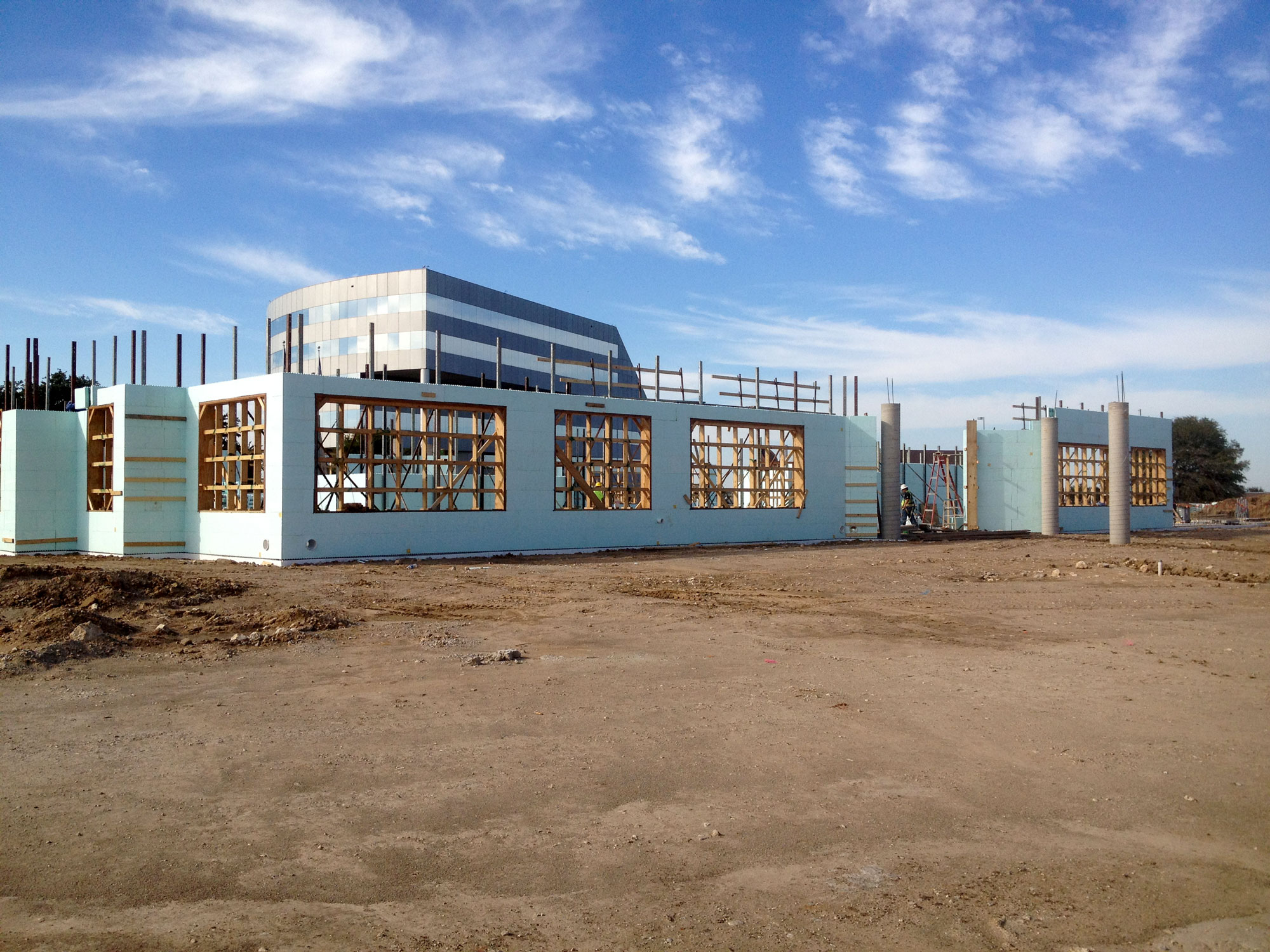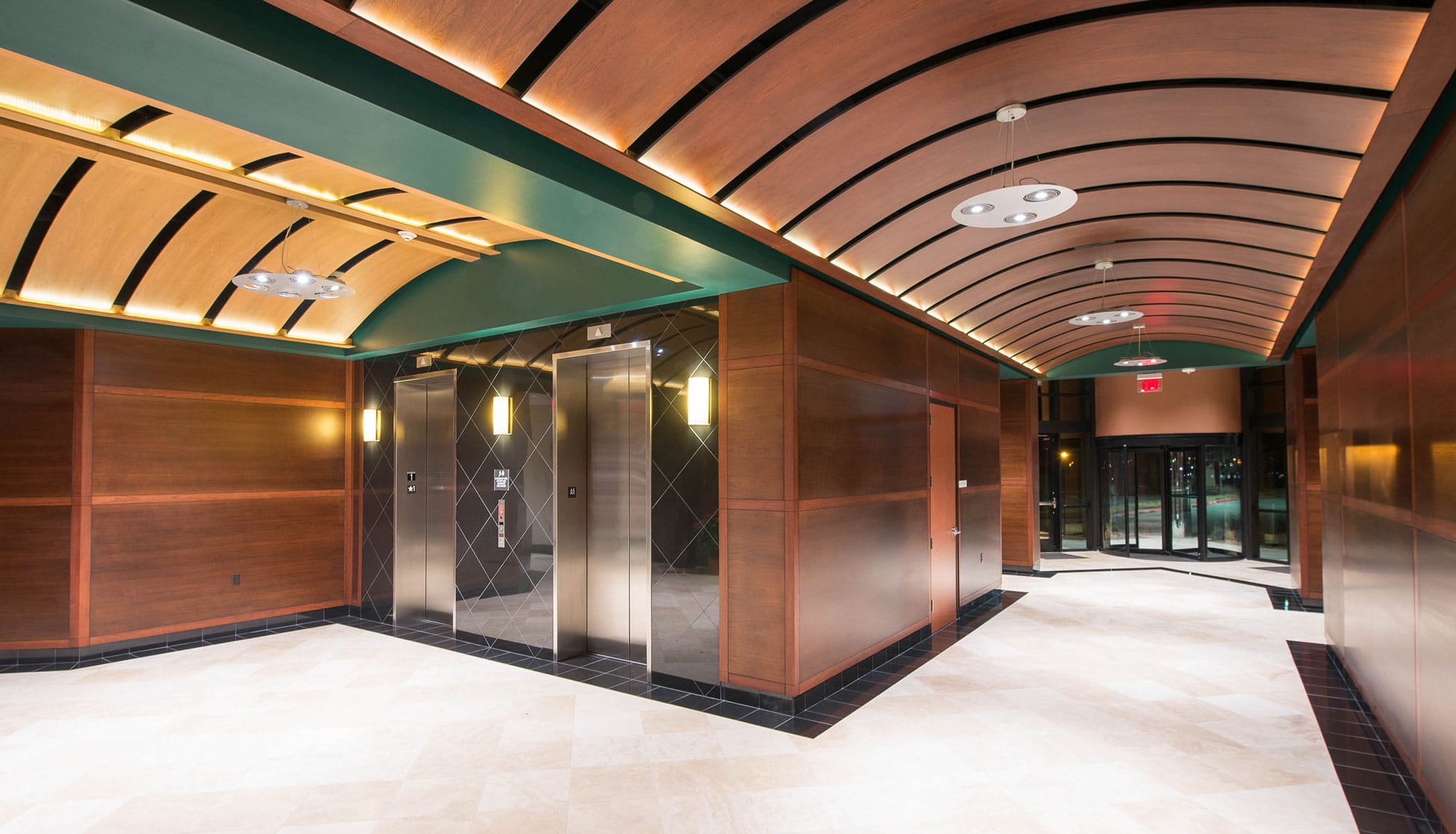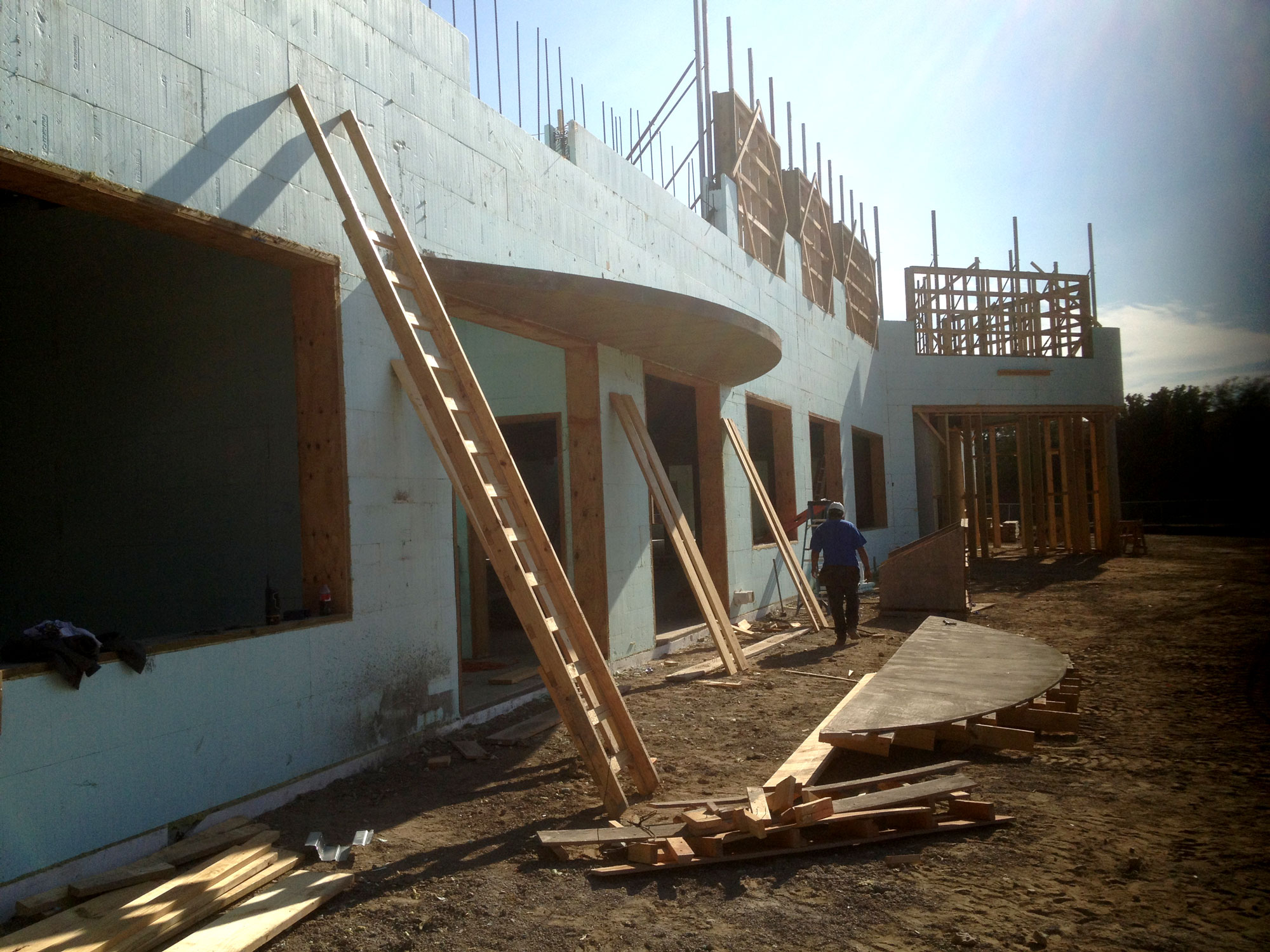NUDURA’s insulated concrete forms are resilient, versatile, and energy efficient.

[Photo: Courtesy of The NUDURA]
 Download a PDF of this story.
Download a PDF of this story.
To learn more, visit NUDURA.
Among the most resilient materials available now are NUDURA’s insulated concrete forms (ICFs). And they’re not just resilient—they also offer a wealth of other benefits for prospective builders.
For starters, ICFs have been proven to survive even the most hellacious conditions. “ICFs won’t allow two-by-fours to go through them at 300 miles per hour,” says Ken Taft, an architect with Bobby Cox Companies, who’s worked with NUDURA’s ICFs on projects like constructing the Augustus Plaza in Fort Worth, Texas. Some of the ICFs’ many benefits were illustrated in this project, proving that they are both adaptable and cut down considerably on building time—and they save money as a result.
Because the ICFs are liquid to start and solid when they finish, they can be molded into an array of shapes. “The form is adaptable: curves, slopes, and anything else, you can do in construction. Different forms have been tested,” Taft says. That means that aesthetic appeal doesn’t have to be sacrificed in order to achieve energy efficiency.
“Concrete is concrete. It’ll be around for 100 to 200 years, whereas wood will be replaced after 35 to 50 years”
Ken Taft, architect with Bobby Cox Companies
The Augustus Plaza building in its finished state offers clear proof of that idea. Its exterior takes a stylishly angular approach, with a sideways-pyramid shape jutting out of its front section and jagged edges along its sides. “NUDURA doesn’t have any less aesthetic appeal than any other product,” Taft says. “You can do anything you want with it. You can cantilever it and make any shape you want to.”
In addition to their flexibility, ICFs also let architects easily add striking exteriors, which paid off handsomely in the Augustus Plaza construction. “Using [the ICFs] allowed us to be innovative in how we put our exterior material on, which is a granite-clad system. The structure was built with the NUDURA ICFs. Not only the exterior, but the interior as well. It gave us our insulation, our structure, and our studs,” Taft says.

[Photo: Courtesy of The NUDURA]
Saving Time and Money
In addition to the visually appealing sheen they offer with the added granite exterior, NUDURA’s ICFs addressed budgetary concerns by reducing the amount of time needed for construction. “If you can cut two weeks on a four-month project, which the ICFs allowed us to do, that’s pretty significant,” Taft says. He says if it weren’t for a malfunction with installing the elevators—an error completely unrelated to NUDURA’s products—the Augustus project would’ve taken even less time to complete.

[Photo: Courtesy of The NUDURA]
But What Makes ICFs Different, Really?
Structures with ICFs are protected against all but the most inconceivable tornadoes and hurricanes, whereas structures made with wood would be decimated under the same conditions. Even for those who live in areas not frequently affected by extreme weather, having ICFs offers peace of mind—and built-in resistance—should a severe storm hit.
ICFs differ from regular concrete in that, as their name implies, they’re a forming system for monolithically poured concrete. Unlike concrete, ICFs lack seams at their corners—they allow concrete to flow from one corner to another. The form itself stays in place and creates insulation, which distributes NUDURA’s ICFs.
Concrete, of course, has a well-deserved reputation for sturdiness, but ICFs take that even further, as evidenced by many recent building projects in which they prove to offer unparallelled energy efficiency, adaptability, and longevity. “Concrete is concrete. It’ll be around for 100 to 200 years, whereas wood will be replaced after 35 to 50 years,” Taft says. That staying power means ICFs offer an unbeatable return on investment. In fact, they usually pay for themselves in energy savings after about a year. “They may cost more upfront, but they’re worth it,” Taft says.

[Photo: Courtesy of The NUDURA]
Where Do the Savings Come From?
Those energy savings come from a variety of sources, according to Cameron Ware of Futurestone. The walls of a structure account for as much as 16 to 18% of its thermal envelope. That might not seem like much, but it can make a significant impact on a building’s overall energy output—ICFs ensure this energy doesn’t leak out into surrounding areas. These savings make ICFs a leading force in helping structures become net-zero energy buildings.
The ICFs’ insulating effect works similarly to how cave walls work. “If it’s 100 degrees outside, it’ll feel cool in the cave,” Ware says. “Come back to the same cave in the winter, and it’ll feel warm in relation. ICFs behave in a similar way.” So ICFs can easily help building owners achieve significant reductions in heating and cooling costs.
Taft also says ICFs’ impact on the thermal envelope is huge. “You can cut down on your air conditioning requirements,” he says. “And when you have the mass of the concrete, the heat doesn’t travel as much.” Compared with wood and other alternatives, the difference is stark. “Wood isn’t an insulator,” Taft says. “A one-to-two inch layer of foam won’t cut it either. It takes 5 to 6 inches of a good insulator to meet building codes now.” Simply put, “You can’t build a wood structure and meet the codes,” he says.
Ware says that while other aspects of building structures have increased their energy efficiency by leaps and bounds, walls have lagged behind. He points to windows with unheard of R-values, but says the “[builders] have ignored the walls. Walls have become a weaker and weaker link.” And, he says, a building is only as energy efficient as its weakest link. As a result of this neglect, “the impact of walls is greater because everything else has improved.”

NUDURA’s ICFS represent the future of building materials. [Photo: Courtesy of The NUDURA]
Even More Benefits
And the NUDURA ICFs have other features that are unique. Unlike its competitors, for example, the NUDURA ICFs are a collapsible-type block. In practice, that means builders can get twice as much storage space out of the ICFs, or they can fit twice as much of the products in their trucks, which can help to save transport trips, Taft says.
For Taft and architects like him, there’s no question that NUDURA’s ICFs represent the future of energy-efficient building materials. “This is where architects and contractors need to be. You take one product and it replaces about four others when you talk about [the ICFs’] insulation, studs, and structure,” he says.
Moreover, making the switch to these building materials wasn’t as challenging as one might expect, even if the upfront costs were higher than some competitors. While some architects may be set in their ways, Taft is confident NUDURA’s ICFs can convince them of their advantages the way they did for him. “It wasn’t difficult for me to adapt. Once you realize how good a product is for your client, you make it work.”
